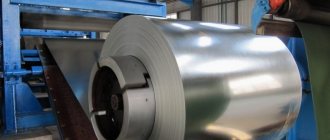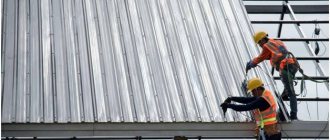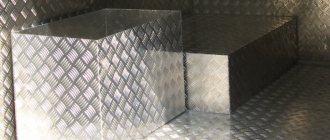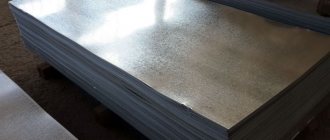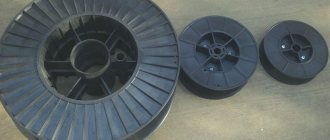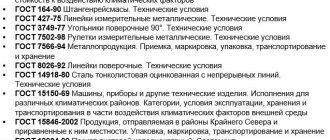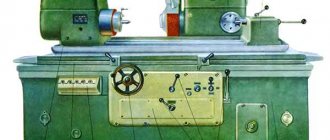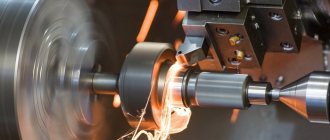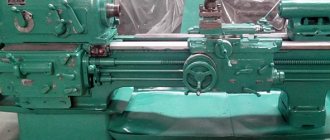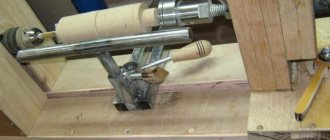Smooth galvanized sheet is a type of sheet metal. Is a steel product, and represents
is a large metal sheet. To improve quality and durability, a protective layer of zinc is applied. To sell goods, cold-rolled steel billets are used, after which the resulting sheet is galvanized. After complete processing, galvanized steel has a uniform protective layer, which allows the resulting product to easily withstand the negative effects of aggressive environments.
Technological implementation of galvanized sheets and their approval for sale is carried out in accordance with GOST 16523-70. For rolling the material, zinc Ts0 and Ts1 are required.
Since the industrial industry regularly improves and offers new developments, the group of galvanized products has also been modified. A novelty in the industry is galvanized sheet, where a polymer coating is applied to obtain maximum protection from damage and rot, as well as to improve aesthetic performance. The process of applying powder (coloring agent) is complex, but it is also necessary to prepare equipment for it that will allow the sheets to be painted evenly. Enterprises that have added new working units to their equipment are able to produce galvanized sheets with a polymer coating in a wide variety of colors.
Key differences between galvanized sheets with polymer coating:
- service life over 50 years;
- wide range of color solutions;
- high corrosion properties.
Purpose of the material
Galvanized sheet with a polymer coating is the basis for the production of modern finishing building materials:
- metal tiles;
- siding;
- profiled sheets;
- parts for mechanical engineering;
- sandwich panels.
It is the construction industry that requires this material most of all, for example, for the construction of fences, fencing, roofing systems, and finishing building facades.
The product has gained particular popularity in the design of marine vessels, cars, household appliances and electrical appliances. The reason for using the material in these industries is due to the presence of an additional protective polymer layer, which allows any structure created on its basis to be durable and reliable, while also having an attractive appearance.
The peculiarity of galvanized sheets with polymer coating is the high quality of the product. It is usually supplied in rolls, but on small trading floors you can find sheets cut to specific sizes. They are easy to install, as they do not require special equipment or lifts.
Advantages and disadvantages of powder coating
Due to the peculiarities of production technology, powder-coated steel has a greater coating thickness than sheets with a polymer layer. This increases anti-corrosion properties.
| pros | Minuses |
| Retains its properties at temperatures from -60 °C to 80 °C | Some buyers note a slight haze in color |
| Great resistance to mechanical stress and scratches | High price |
| You can create different effects (steel silk/velvet), different degrees of gloss | |
| Contains no harmful organic compounds | e |
| Almost odorless |
Sheet production
This building material has 6 main components in its design:
- steel sheet;
- galvanized coating;
- anti-corrosion protective layer;
- primer;
- polymer coating;
- protective varnish.
To begin with, the steel billet is sent to a cold-rolled machine. The output is a sheet with a uniform, smooth surface, onto which galvanized coating is applied on both sides. The presence of this layer makes the material resistant to corrosion and aggressive environments, due to which the product has such a long service life.
A special anti-corrosion protection is applied to the resulting workpiece with zinc, after which the sheet is immediately primed. When dry, the product is sent to another production stage: the application of polymer dye. For this purpose, a sprayer is used, into which the paint product is filled in powder form. At the end of the stage, the final process is required: applying a varnish coating.
Let's sum it up
The service life of metal tiles greatly depends on the protective coating. Moreover, such a coating is always at least two layers:
- Base protective layer made of zinc . Its effectiveness directly depends on density. It is ideal if the zinc consumption is at least 275 g/m2 on one side, but more often they use material with a galvanization density of 142.5-275 g/m2 due to the lower price. If the zinc consumption is even less, such metal tiles can only be used for temporary buildings.
- Final polymer protective layer . There are four types of metal tile coatings: cheap polyester, reliable and durable polyurethane, very durable plastisol and chemically resistant PVDF.
Rental features
The specificity of the building material lies precisely in the additional protective layer. For the production of such sheets, cold-rolled hot-dip galvanized steel of small thickness is used. A special coating is applied to it, which can be of two types:
- plastisol (PZP);
- paintwork (paint and varnish).
The main GOST requirement for the production of galvanized steel coils is the composition of the polymer coating. The following coatings are currently considered approved for use:
- Enamel (protective): polyester and epoxy.
- Enamel (finishing): polyester, polyurethane, acrylate, PVC plastisol.
- Primer: acrylate, epoxy and polyester.
The presence of such additional surfaces does not limit builders in any way. This product can also be processed on both sides.
Galvanized sheets with polymer coating are classified into several groups. Thus, products are divided by accuracy class and are normal (BT) and advanced (AT). There is a gradation of material according to the drawing of the original workpiece:
- very deep (VG);
- deep (D);
- complex (SV);
- normal (N).
On large production lines, the production of building materials is carried out in large batches in order to satisfy the needs of a larger number of consumers, therefore the differences between several models of sheets even consist in the form of edges: edged and unedged.
There are also GOST requirements for product dimensions. The thickness of the sheet with a polymer coating should vary between 0.35-2 mm. The sheet width is manufactured from 500 to 1800 mm. Allowable deviations in width are from +5 to +20 mm. The maximum weight of a roll is 16 tons, but if the rolled products are repacked into bundles, then their weight does not exceed 10 tons.
Hot rolled and cold rolled
These two types of steel differ in the type of production.
Hot-rolled steel is rolled while still hot. Its distinctive features are a sheet thickness of 10-15 mm, an average surface smoothness and a relatively low wear resistance threshold. However, this does not mean that such material will not find application. It is widely used in the manufacture of various types of profile pipes.
Cold rolled steel coils have some differences from the previous version. It is the same hot-rolled metal, but with additional processing. This is what allows it to contain a reduced amount of carbon. The manufacturing technology also gives cold-rolled steel some operational features:
the minimum thickness reaches 0.45 mm; the surface of the sheet becomes perfectly smooth; Excellent weldability.
Additional characteristics of building materials
Manufacturing enterprises sell most goods to order, based on the wishes of the consumer. Both parties agree on all technical properties of the product, therefore the number of layers of polymer coating, as well as their thickness on the material, may vary depending on the client’s requirements. The thickness of polymer coatings varies from 10 to 500 micrometers.
The following requirements apply to the application of such a protective layer:
- uniform surface color, complete absence of flaws;
- absolute absence of zinc crystallization process.
In this case, minor scratches, shagreens and pockmarks are allowed, as well as the presence of zones with different levels of gloss.
The presence of an additional polymer coating is a factor that complicates production, and therefore increases the requirements for its quality. That is why only one seam is possible on a galvanized roll.
The production of such building materials is a long process, but testing the products is no less short. Before being released for sale, the resulting rolled metal undergoes final measurements. The width of the sheets is determined not by the edge of the product, but at a distance of more than 1 m from the end of the roll. The thickness is measured at a distance of 2 cm from the edge.
But to completely fill out the documentation, it is not enough to measure the dimensions of the product. Detailed testing and going through trials is required. A meter-long piece cut from one end of the roll is checked using special units. After this, the sample is a confirmation of passing the checks and a guarantor of the quality of the roll. That is why each roll on sale is accompanied by a sheet of technical characteristics of the products.
GOST for galvanized steel with polymer coating 30246-94
Rolled thin sheets with protective and decorative paint coating for building structures
Preface
- Developed by the Central Order of the Red Banner of Labor Research and Design Institute of Building Metal Structures named after N.P. Melnikov (TsNIIPSK named after Melnikov) of the Russian Federation. Introduced by the Ministry of Construction of Russia
- Adopted by the Interstate Scientific and Technical Commission for Standardization and Technical Regulation in Construction (INTKS) on November 17, 1994.
The following voted for adoption:State name Name of the state construction management body Republic of Kazakhstan Kyrgyz Republic Russian Federation Republic of Tajikistan Republic of Uzbekistan Ministry of Construction of the Republic of Kazakhstan State Construction Committee of the Kyrgyz Republic Ministry of Construction of Russia State Construction Committee of the Republic of Tajikistan State Committee for Architecture and Construction of the Republic of Uzbekistan - By Decree of the Ministry of Construction of Russia dated January 27, 1995 N 18-3, the interstate standard GOST 30246-94 was put into effect directly as a state standard of the Russian Federation on September 1, 1995.
- INTRODUCED FOR THE FIRST TIME
- Application area
This standard applies to rolled thin sheets with a protective and decorative paint coating (hereinafter referred to as painted rolled products), applied on coiled metal painting lines using the roller method, intended for the manufacture of structures and other building products by cold roll forming and bending.The standard can be extended to coated rolled products used in other industries.
Mandatory requirements for product quality are set out in 3.3-3.5, 4.2, section 8. The scope of compliance with the requirements of sections 5 and 6 is determined by the consumer.
- Normative references
This standard uses references to the following standards, building codes and specifications:GOST 9.032-74 ESZKS. Paint and varnish coatings. Groups, technical requirements and designations
GOST 12.1.044-89 (ST SEV 4831-84, ST SEV 6219-88, ST SEV 6527-88, ISO 4589-84) SSBT. Fire and explosion hazard of substances and materials. Nomenclature of indicators and methods for their determination
GOST 12.3.002-75 (ST SEV 1728-89) SSBT. Production processes. General safety requirements
GOST 12.3.005-75 (ST SEV 3951-82) SSBT. Painting works. General safety requirements
GOST 12.3.008-75 SSBT. Production of metallic and non-metallic inorganic coatings. General safety requirements
GOST 4381-87 Lever micrometers. General technical conditions
GOST 4765-73 Paint and varnish materials. Methods for determining impact strength
GOST 6507-90 (ST SEV 344-76 - ST SEV 352-76, ST SEV 4134-83) Micrometers. Specifications
GOST 7566-81 Rolled products and further processing products. Rules for acceptance, labeling, packaging, transportation and storage
GOST 14192-77 (ST SEV 257-80, ST SEV 258-81) Marking of cargo
GOST 14918-80 Galvanized thin sheet steel with continuous lines. Specifications
GOST 15140-78 Paint and varnish materials. Methods for determining adhesion
GOST 15150-69 (ST SEV 458-77, ST SEV 460-77, ST SEV 991-78, ST SEV 6136-87) Machines, instruments and other technical products. Versions for different climatic regions. Categories, operating, storage and transportation conditions regarding the impact of environmental climatic factors
GOST 20477-86 Polyethylene tape with a sticky layer. Specifications
GOST 24045-94 Bent steel sheet profiles with trapezoidal corrugations for construction. Specifications
GOST 25706-83 Magnifiers. Types, basic parameters. General technical requirements
M12291 871001005SNiP 2.03.11-85S Building codes and regulations. Protection of building structures from corrosion
TU 14-11-236-88 Cold-rolled aluminized thin-sheet products. Specifications
TU 14-11-247-88 Cold-rolled thin sheets with aluminum-zinc coating. Specifications
- Basic parameters Painted rolled products (OC) are manufactured with one- and two-layer coatings up to 200 microns thick with paint and varnish materials of groups I, II and III according to SNiP 2.03.11, intended for painting on coiled metal lines, with a film strength in bending “T” from 0T up to 4T in accordance with this standard
- Painted rolled products are manufactured with one-sided coating (designation 1), two-sided identical coating on both sides (designation 2) and two-sided different coatings on the front and back sides (designation 3). Note: Face side is the outer side of the roll.
- Painted rolled products are supplied in rolls. Thickness of rolled products in rolls - from 0.5 to 1.2 mm and width - up to 1500 mm
- Dimensions, weight, telescopicity of a roll of painted rolled steel should not exceed:
- internal diameter - 640 mm;
- outer diameter - 1500 mm;
- telescopicity - 40 mm;
- weight - 10 tons.
- Schemes and examples of symbols for painted rolled products are given in Appendix A.
- Requirements for source materials
- For the production of painted rolled products, only rolled steel sheets with and without metal protective coatings and rolled aluminum are used as the initial workpiece. The quality of the original rolled products is certified by a document from the manufacturer of the rolled products or from the manufacturer of the painted rolled products.
- The quality of the protective and decorative paint coating in terms of appearance must be at least class V according to GOST 9.032
- Marking and packaging of rolled products - in accordance with GOST 7566 with additions
- Rentals are accepted in batches. A batch includes products manufactured using the same technology from blanks of the same batch with the same coating. The total number of rolls in a batch should not exceed the replacement production output.
- name and/or trademark of the manufacturer;
- The quality of painted rolled products in terms of the degree of protection from aggressive environmental influences (4.1.4) is ensured by the production technology of painted rolled products, the quality of paints and varnishes in accordance with regulatory documents for these materials, as well as tests according to this standard for the bending strength of the coating “T” (6.3) , film adhesion (6.4) and coating thickness (6.5)
- measure the thickness of the coated sheet;
in the same place, measure the thickness of the sheet after removing the coating with an organic solvent;
The minimum value of the three definitions is taken as the result.
- Loading and fastening of painted rolled steel rolls is carried out in accordance with the technical conditions for loading and fastening of goods in force for transport of this type, taking into account the full use of carrying capacity
- Painted rolled steel is a non-toxic and fireproof material in accordance with GOST 12.1.044
APPENDIX A (required)
Scheme and examples of symbols for painted rolled products
1 - type of rental (OK); 2 - presence of coating on the front and back sides (3.2);
3 - designation of the material of the cover layer of the front and back sides (4.1.3);
4 - size and symbol of the material of the initial workpiece (4.1.1);
5 - designation of this standard
Examples of symbols:
Painted rolled products (OK) with one-sided coating (1) of the front side with GF-296 varnish applied on galvanized steel in accordance with GOST 14918, 0.8 mm thick and 1250 mm wide:
1 GF-296/-GOST 30246-94 OK ———————————— OTs HP-NR-KR-1-0.8x1250 GOST 14918-80
Painted rolled products (OK) with double-sided identical coating (2) of both sides with epoxy primer EP-0140, applied to steel with an aluminum-zinc coating in accordance with TU 14-11-247, 0.8 mm thick and 1250 mm wide:
2 EP-0140 GOST 30246-94 OK ————————————— AC 170-Kr-230-0.8x1250 TU 14-11-247-88
Painted rolled products (OK) with different coatings on both sides (3) of the front side - ML-1202 enamel and the reverse side - ML-1203 enamel, applied to steel with an aluminum coating according to TU 14-11-236, 0.8 mm thick and 1250 wide mm:
3 ML-1202/ML-1203 GOST 30246-94 OK ———————————— A 150-230-0.8x1250 TU 14-11-236-88
APPENDIX B (for reference)
Paint and varnish materials used for painting rolled products
Table B1
| Paint system | Physical and technical properties of coatings | The degree of aggressive environmental influence according to SNiP 2.03.11 | ||||||
| Cover layer | Primer | Bending strength “T”, no more | Adhesion, point | Coating thickness, microns | Film color | |||
| Material | Material | Number of layers | ||||||
| Varnish GF-296 | — | — | — | — | colorless | |||
| Enamel ML-1202 Enamel ML-1202PM | EP-0200 | 1 | 2.5T | 1 | 25-40 | Light grey, red-brown, blue, light green | Slightly aggressive | |
| Enamel ML-1203 | EP-0200 | 1 | 2.5T | 1 | 15-20 | Fawn, shade is not standardized | Non-aggressive | |
| Enamel AS-1171 AS-1171PM | EP-0200 | 1 | 2T | 1 | 25-30 | White, grey, turquoise, blue | Slightly aggressive | |
| Primer EP-0140 | — | — | 3,5 | 1 | 70-80 | Red, sand, pink | Slightly aggressive | |
| Paint OD-HV-221 | AK-0138 | 1 | 1T | 1 | 40-50 | White, light green, blue, black, blue-gray | Slightly aggressive | |
| Plastic compound PL-HV-122 | AK-0138 | 1 | 0T | 1 | 180-220 | Gray-blue | Slightly aggressive | |
| Enamel GF-2107 | — | — | 2T | 1 | 10-15 | Light gray, shade is not standardized | Non-aggressive | |
Notes
- The listed materials provide protection of the product from corrosion with the radii of profiling bends and the materials of the initial workpiece made of thin-sheet galvanized steel that meets the requirements of paragraph 1 of table 9 of GOST 24045.
- Varnish GF-296 is used to preserve the presentation of the main protective and decorative coating when rolling metal into rolls and storing products.
- It is allowed to use other paints and varnishes with the quality of the resulting coatings meeting the requirements of SNiP 2.03.11 and this standard.
APPENDIX B (required)
Test method for coating strength in bending “T”
Testing of painted rolled products for coating strength when bending “T” is carried out using a vice or special devices. The sample is bent 180 degrees. at a distance of 25 mm from its edge (coating on top) and then flattened in a vice or with a special device.
The condition of the coating on the bend is examined using a magnifying glass. If there are no cracks on the surface of the coating, then the strength at first bending corresponds to 0T. If there are cracks, then the sample continues to be bent in the above manner (see Figure 1). In the absence of cracks, the film strength at the second bend is 0.5T. If there are cracks, the sample is bent a third time. In the absence of cracks, the strength of the coating will be 1T. If there are cracks in the coating, bending continues up to four, five or more times until the cracks disappear, and the strength of the coating will be 1.5T, 2T or more.
1st bend 2nd bend 3rd bend
0T 0.5T 1T
Picture 1
The minimum bend radii R (in millimeters) of painted rolled products during its further processing are determined by the formula
R = t/T (1)
where t is the thickness of the painted rolled product, mm;
T is the numerical value of the coating strength of painted rolled products during bending “T”.
The minimum bend radii for various workpiece thicknesses and coating strength values “T” are given in Table B1.
| Thickness of the original workpiece t | Minimum bend radii for film strength when bending “T” | |||||||
| 0.5T | 1T | 1.5T | 2T | 2.5T | 3T | 3.5T | 4T | |
| 0,5 | 0,25 | 0,5 | 0,75 | 1,0 | 1,25 | 1,5 | 1,75 | 2,0 |
| 0,6 | 0,3 | 0,6 | 0,9 | 1,2 | 1,5 | 1,8 | 2,1 | 2,4 |
| 0,7 | 0,35 | 0,7 | 1,1 | 1,4 | 1,75 | 2,1 | 2,45 | 2,8 |
| 0,8 | 0,4 | 0,8 | 1,2 | 1,6 | 2,0 | 2,4 | 2,8 | 3,2 |
| 0,9 | 0,45 | 0,9 | 1,35 | 1,8 | 2,25 | 2,7 | 3,15 | 3,6 |
| 1,0 | 0,5 | 1,0 | 1,5 | 2,0 | 2,5 | 3,0 | 3,5 | 4,0 |
| 1,2 | 0,6 | 1,2 | 1,5 | 2,4 | 3,0 | 3,6 | 4,2 | 4,8 |
Galvanized sheet with a polymer coating is an ideal option for realizing design ideas
The building material has gained popularity not only due to its high technical characteristics and long service life, but also due to its special resistance to aggressive environments. the material easily tolerates long stays in water. But in addition to all this, sheets of this type have over 180 shades, which means that any design project can be implemented.
The variety of colors allows you to realize any idea, but here there is another advantage of the sheet: resistance to ultraviolet radiation. The rich shade that any buyer sees on the trading floor will retain its brightness, even with prolonged exposure to sunlight. There is no color fading at all.
Return to list of articles
Galvanized sheet
This standard applies to sheet and coil cold-rolled steel, hot-dip galvanized in continuous galvanizing units, intended for cold profiling, for painting, production of stamped parts, utensils, containers and other metal products.
The technical level indicators established by this standard meet the requirements of the highest and first quality categories. It is divided: according to purpose into groups for cold stamping - XSh, for cold profiling - KhP, for painting (trained) - PK, general purpose - ON; according to the ability to draw (steel group XIII) into categories: normal drawing - N, deep drawing - G, very deep drawing - VG; according to the uniformity of the thickness of the zinc coating: with normal thickness variation - HP, with reduced thickness variation - UR. By agreement between the consumer and the manufacturer, galvanized steel can be produced: with a crystallization pattern - KR, without a crystallization pattern - MT. Depending on the thickness of the coating, galvanized steel is divided into 3 classes Thickness class Weight of 1 m2 of coating layer applied on both sides, g Coating thickness, µm P (increased) from over 570 to 855 inclusive from over 40 to 60 inclusive. 1 over 258 up to 570 inclusive over 18 up to 40 inclusive 2 from 142.5 to 258 inclusive from 10 to 18 inclusive. Galvanized steel is made with a width from 710 to 1800 mm inclusive, a thickness from 0.5 to 2.5 mm inclusive from carbon cold-rolled coiled steel. For galvanizing, zinc grades Ts0 and Ts1 are used with the addition of aluminum, lead and other metals to the bath. Alloying with lead through the introduction of zinc grade Ts2 is allowed. To protect the surface from corrosion, preservation is carried out: passivation, oiling or passivation and oiling. At the request of the consumer, galvanized steel is not preserved. Example of a symbol: galvanized coiled steel 1.2 thick, 1000 mm wide, increased rolling accuracy A, with cut edge O, grade 08kp, very deep drawing VG, without crystallization pattern MT, with reduced thickness variation UR, second class coating according to GOST 14918 -80: OTs A - O - 1.2x1000 GOST 19904-74 08kp VG - MT - UR - 2 GOST 14918-80 Galvanized steel sheet is manufactured in accordance with GOST 14918 - 80 .
When to choose what?
If you need a cheaper or lighter option, and color is not important, then choose galvanized sheet. If you need very durable protection, and appearance is extremely important, then a more expensive polymer option is suitable.
The galvanized option is good for temporary solutions, for creating foundation formwork, for installing fences and fences that will be easy to repair. In this case, you will save money.
We remind you that none of the types of corrugated sheets are intended for contact with food products, so it will not be possible to assemble them, for example, into storage for grain or silage. Zinc is harmful, and paint does not completely protect products from its effects.
We have a wide selection of decorative options and inexpensive galvanized sheets. Call!
